Wards Island Park is part of the Wards Island-Randalls Island landmass, which used to be two islands in the Harlem River at the intersection of Manhattan, Queens and the Bronx but were combined into one by landfill decades ago. Both names persist.
It's not clear to me what parts of the island(s) are officially parkland, but the name "Wards Island Park" is associated with the southern section and "Randalls Island Park" with the big sports and recreation facilities in the northern part. This post describes my exploration of the southern half of the 480-acre combined island.
I walked over from Harlem via the Wards Island Bridge, also called the 103rd Street Footbridge (though you actually approach it from 102nd or 105th Streets).

The bridge is for pedestrians and bicycles only. Walking across it on the day of a bike event can be hazardous.
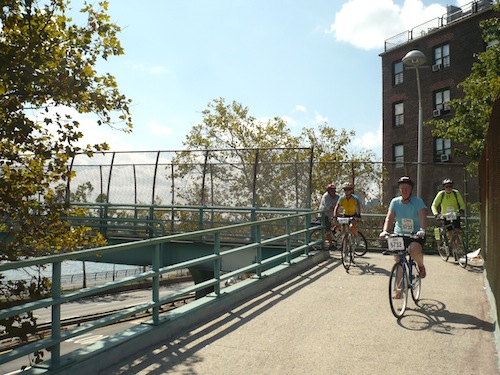
Looking down onto the Harlem River Drive I couldn't help grabbing a shot of the on-road signage. Exactly what bridge this warns drivers of, I'm not sure.
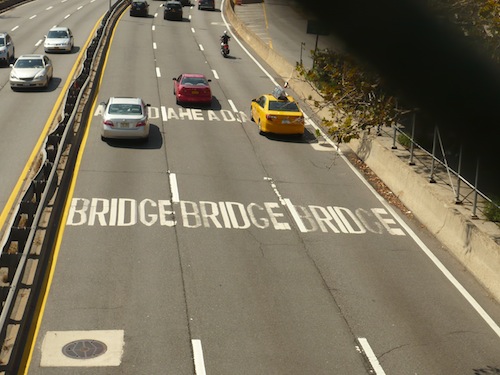
The crossing also provides a pretty good look at Mill Rock, a tiny eight-acre island with an interesting (and explosive) history. Technically it's a park. Whether this writer will ever uncover a way to get there, only time will tell.
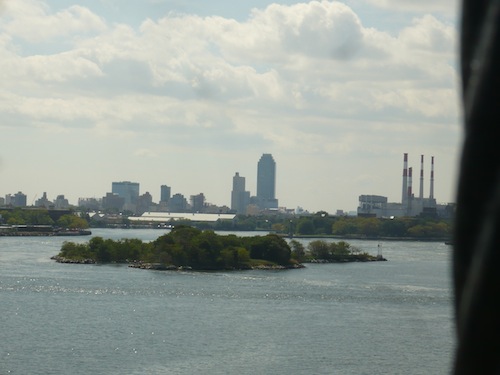
I arrived on Wards Island and turned south onto a really nice tree-lined waterfront walkway.
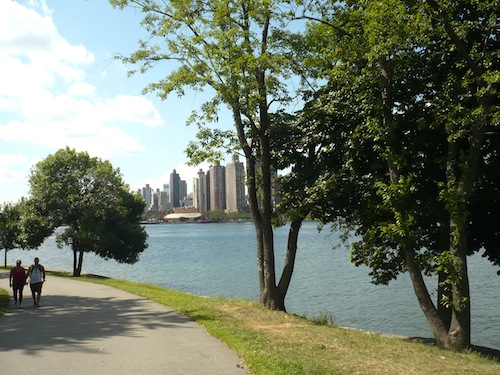
With apologies to the artist: This has to be one of the most unappealing – or at least out-of-place-looking – public art installations I've ever come across.

A little further along, as I curved left and began to walk east along the southern coast the island, the Triborough Bridge (recently renamed the Robert F. Kennedy Bridge) came into view. Pictured is the span that crosses to Queens.
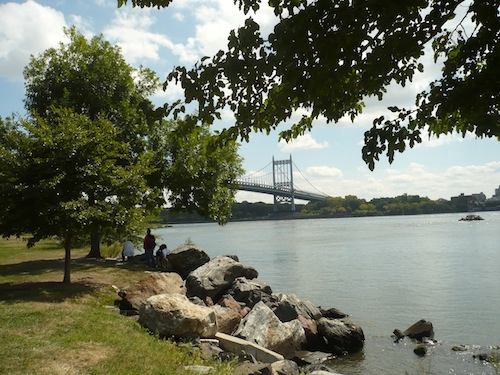
Next I came to a big expanse of soccer fields pushed up against a gigantic Triborough Bridge support structure.
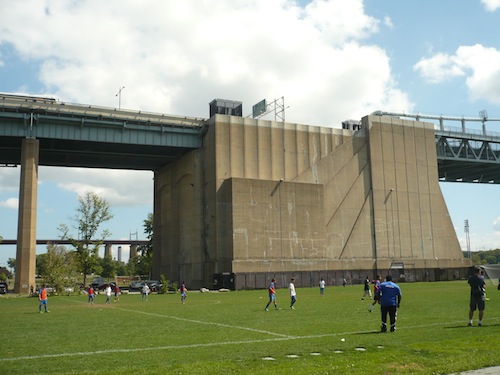
Bridges are everywhere here. I zoomed in to get a good look at the handsome archway of the Hell Gate Bridge. (See Astoria Park for a look at it from the Queens side.)
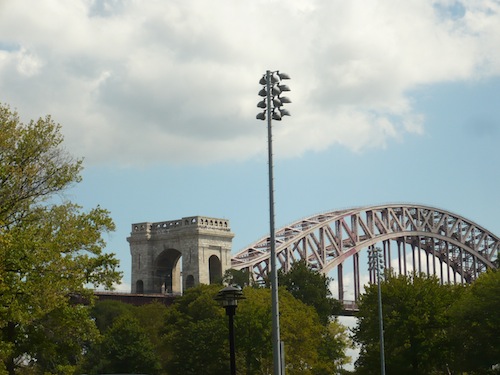
There's a strong presence of community services here on Wards Island, including the 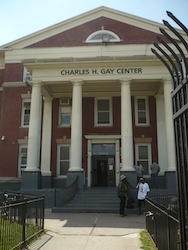
Also, dominating the landscape of a big hunk of the island is the Manhattan Psychiatric Center, the beige building visible to the right in the photo below. I'd seen this building any number of times from across the water in Manhattan, specifically from the car while driving down the Harlem River Drive, but never knew what it was.
According to Wikipedia, it was once the largest psychiatric hospital in the world, though today it houses only a couple of hundred patients. The size makes it plausible that, as Wikipedia relates, it once had 4,400 beds. If a building that can house that many people now holds only some 200, imagine the huge closed-off parts. Almost makes me want to believe in ghosts. The hospital (though not this building) dates back to 1848 when, before the Ellis Island era, immigrants were routed through Wards Island – another piece of interesting New York City history stirred up by a visit to Wards Island.
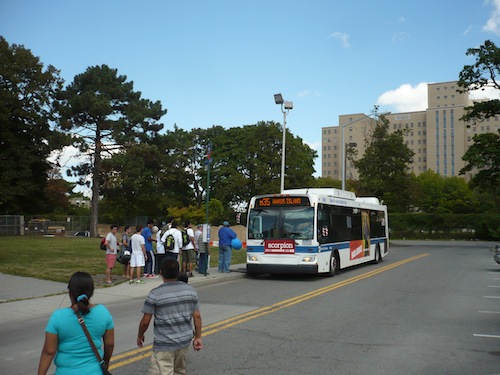
The Help USA building sits behind a huge grassy expanse, a "waste of space" unimaginable in Manhattan.
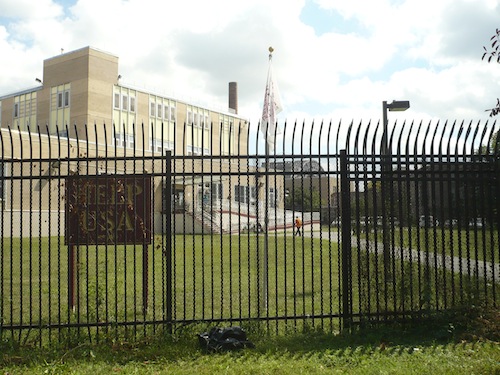
Speaking of ghosts, an eerie landscape presents itself under this Triborough Bridge ramp. While this is far from what anyone would think of as parkland, it impressed itself on my senses in a big way.
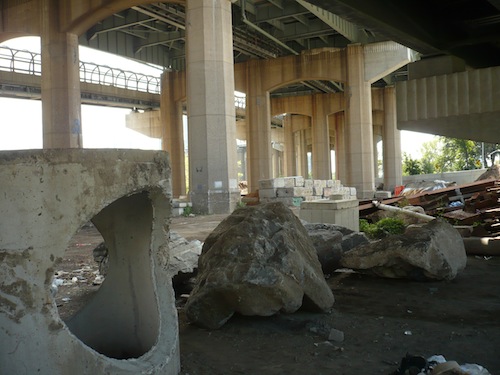
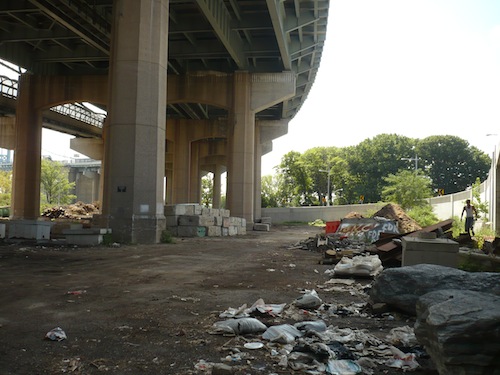
Walking north up the road through the center of the island took me past this Manhattan Forestry site. I can't find much information on this, but I'm guessing it's a place where plants meant for planting in Manhattan are stored and/or cultivated.

But before we return to proper parkland, here's one more image of a bridge-related structure. Seeing this reminded me that Robert Moses in his capacity as head of the Triborough Bridge and Tunnel Authority – which was and still is named after this bridge, after all, even though it now manages a number of other major crossings – used to have his headquarters here on the island. Though the Authority is now called "MTA Bridges and Tunnels," it is still, according to Wikipedia, officially the "Triborough Bridge and Tunnel Authority."
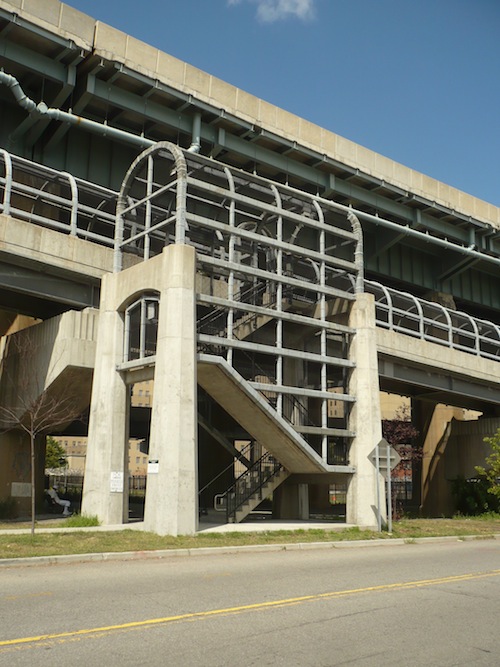
Where exactly you used to be able to find ol' Robert Moses squirreled away, I couldn't say. (If you know, please add a comment below!) Meanwhile, here's something he didn't live to see – and probably wouldn't have had the slightest interest in:
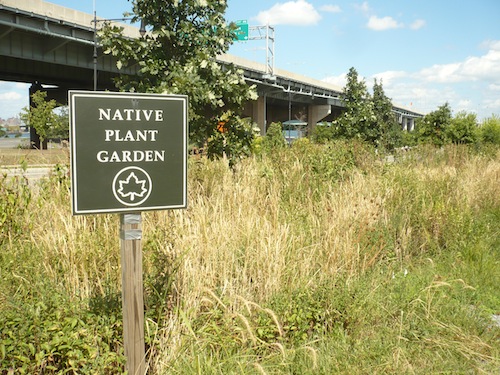
What a joy to come upon this while walking up the hot and more-or-less barren road. And I wasn't the only one enjoying the native plants of the Randalls Island Freshwater Wetland, once part of the channel that separated Wards and Randalls Islands.
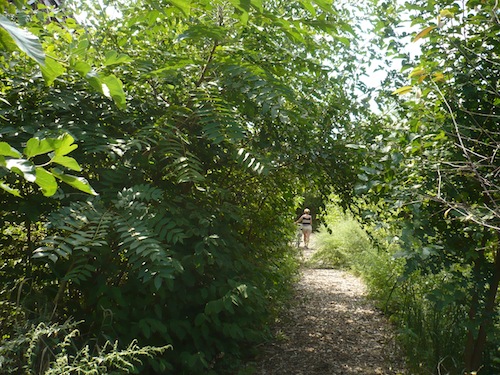
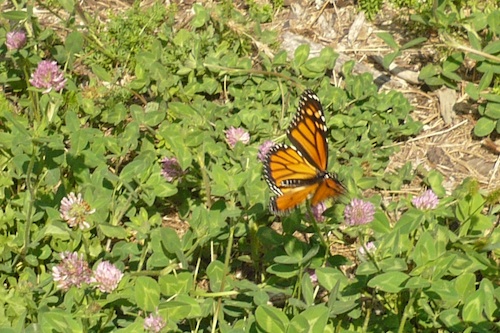
Beginning in 1992 the Randalls Island Sports Foundation (RISF) and the Parks Department's Natural Resources Group (NRG) restored a small area of wetland here, planting native species that provide feeding for insects (like grasshoppers, dragonflies, and the butterfly shown above), birds, even muskrats in the nearby salt marsh. The wetland is supported by water from storm drains located just to the south.

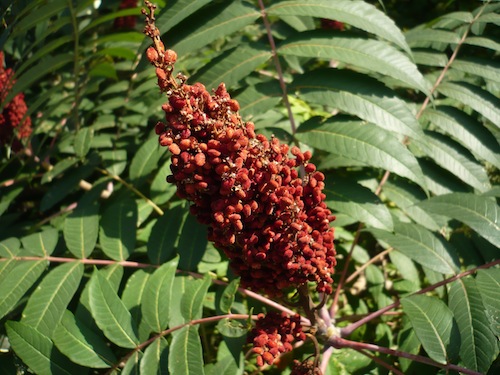
The red growth above is a burst of sumac berries.
The path through the Native Plant Garden dead-ends, but on retracing my steps, crossing the road and heading up the paved path – again fighting zooming bicycles for a short stretch – I quickly came to a footbridge that leads you across the beautiful salt marsh, the true highlight of my day.
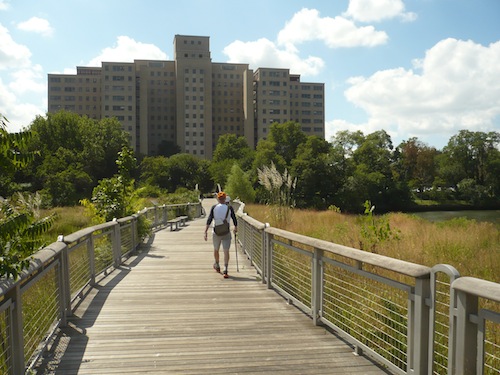


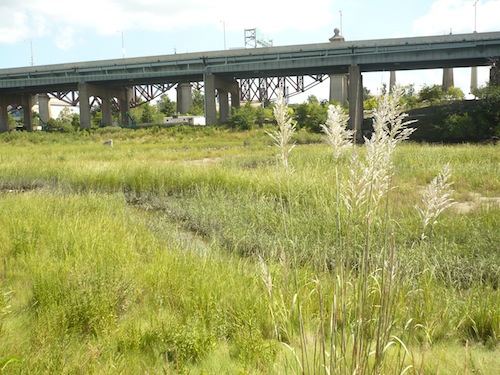

I left the salt marsh and walked south along the coast, back towards the bridge, finding more vistas and surprises along the way.

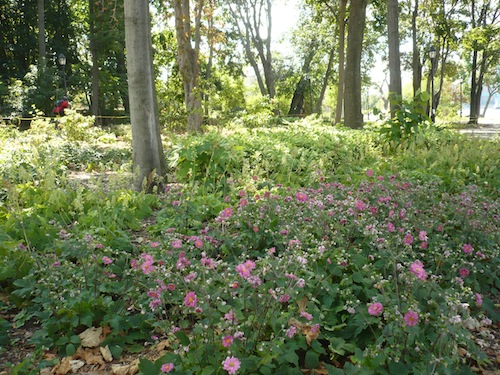
Humans, of course.

But also horses. Did you know the NYC Riding Academy was on Wards Island? I didn't.
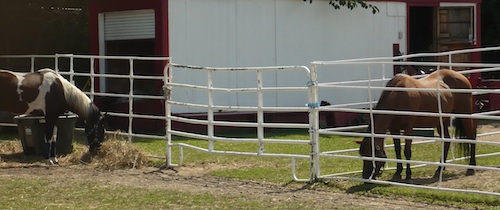
With all that, I still have to plan another visit, this time to delve into the combined island's northern, Randalls Island section. Exactly what counts as "park" in this little-explored part of New York City is unclear to me. But it's full of unusual and surprisingly beautiful spaces to investigate. Who knew? I sure didn't.
No comments:
Post a Comment